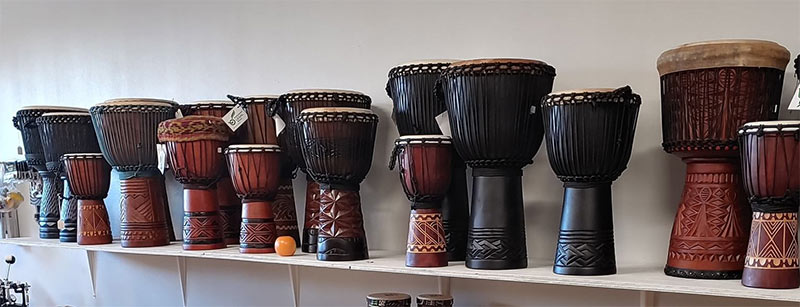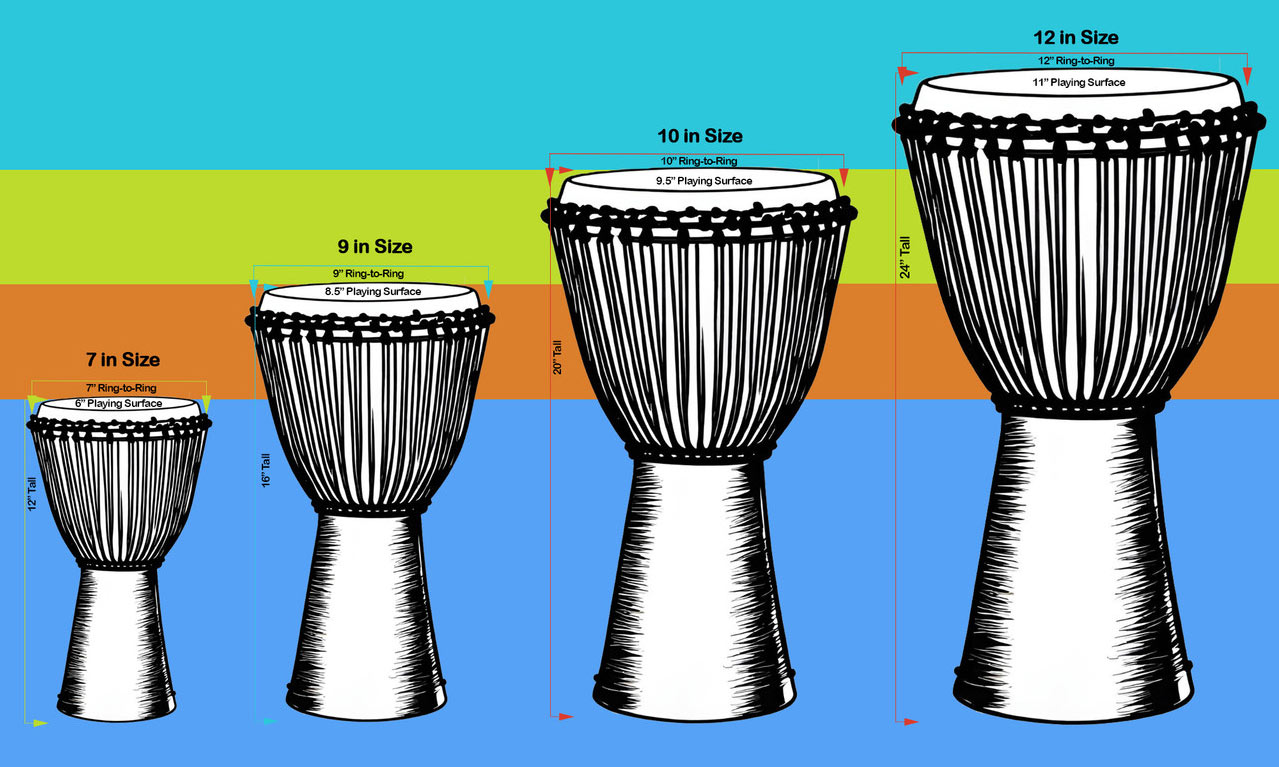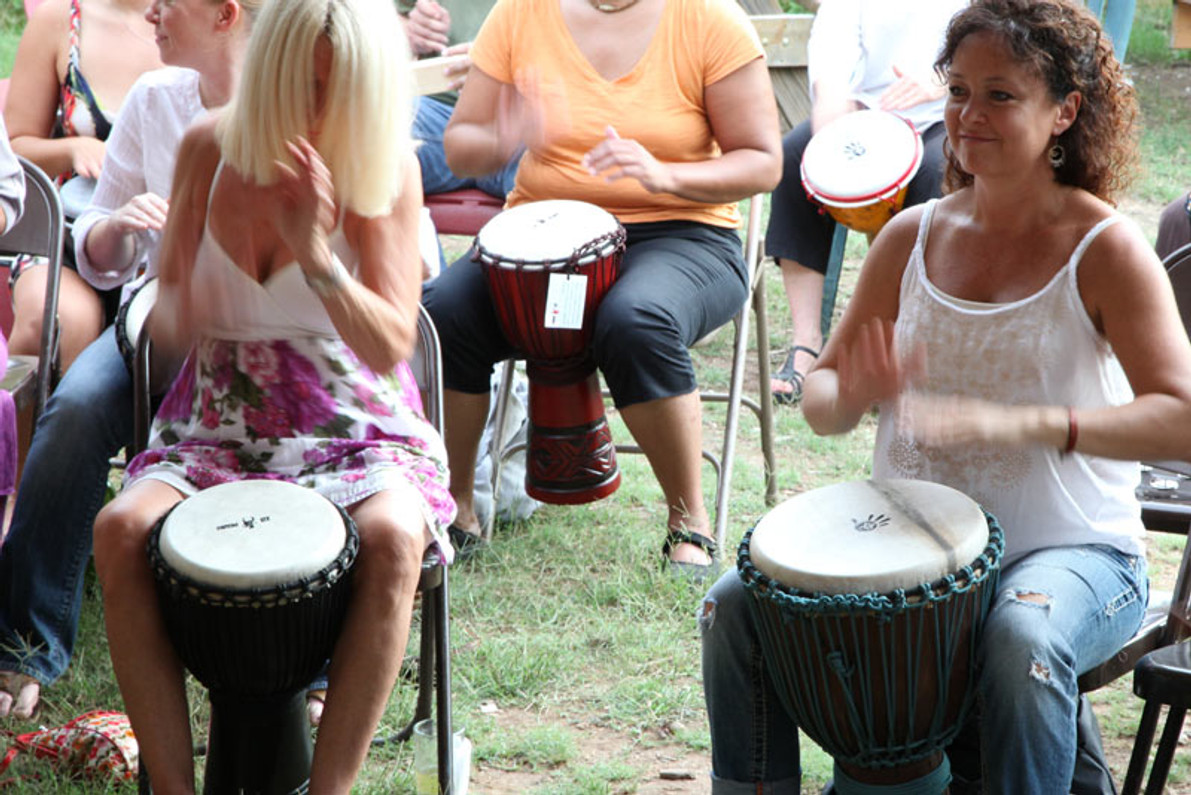Beginner's Guide to Playing the Djembe Drum: Techniques and Tips
What is a Djembe Drum?
The djembe drum is a West African drum shaped like a goblet and traditionally carved from a single piece of hardwood. It is played with the hands, and its body is covered with a thin layer of goat skin. The drum produces a wide range of tones, from deep bass to piercing high notes. Traditionally used in rituals, ceremonies, and social gatherings, the djembe is known for its versatile and expressive sound. The djembe drum is also popular in modern music, used in various genres like world music, folk, and pop.

History of the Djembe Drum
The Djembe drum has its origins in West Africa, specifically in Guinea, Mali, and the Ivory Coast. It has been an integral part of the region's culture for centuries, used in traditional ceremonies, celebrations, and storytelling. The drum's unique shape and sound are rooted in the rich cultural history of the Malinke and Susu people. Its design and purpose have remained largely unchanged throughout history, serving as a symbol of unity and communication within the community.
Anatomy of the Djembe Drum
The djembe drum is a percussion instrument traditionally carved from a single piece of hardwood and topped with a goat or cow skin. The body of the drum is shaped like a goblet, allowing for easy playing while sitting down. The head of the drum is traditionally maintained with natural tuning and can produce a wide range of tones, from deep bass to sharp slaps. The ropes that stretch the skin are used for tightening and tuning the drum. The djembe's unique construction is what gives it its distinctive sound and allows for a wide variety of playing techniques.
Different Types and Sizes
Djembe drums come in various sizes, with the most common being the traditional 12-inch diameter and 24-inch height. Different sizes produce different tones, which is why it’s essential to choose the size that suits your music style. Smaller drums have higher pitches, while larger ones produce deeper sounds.

Understanding Djembe Drum Techniques
To play the djembe drum, it's important to understand the basic techniques involved. Here are some fundamental techniques to get you started:
- Bass Tone: This is created by striking the center of the drum with an open hand. It produces a deep, resonant sound.
- Tone: Striking the edge of the djembe with your fingers creates a higher-pitched sound known as the "Tone."
- Slap: For a sharp, crisp sound, use your fingers to strike the edge of the drum.
These techniques form the foundation of djembe playing and mastering them will help you in creating various tones and rhythms.
Essential Tips for Beginners
When starting to play the djembe drum, ensure that you maintain proper posture and grip to avoid strain. Pay attention to the sound and rhythm produced and practice in a quiet environment to focus on your technique. Initially, it's important to start with basic rhythms and gradually progress to more complex ones. Additionally, try to find a local drumming group or a teacher to receive guidance and support during your learning journey.
Holding and Positioning the Djembe Drum
To play the Djembe drum, it's important to hold it between your legs with the bottom of the drum slightly tilted away from your body. The drum should rest on the ground, allowing you to comfortably reach the drumhead surface with your hands while sitting. Your dominant hand should be placed near the base of the drum, with your other hand near the edge. Keep a relaxed posture and use your wrists and fingers to produce different sounds while playing.
Basic Djembe Rhythms to Practice
To get started with playing the djembe drum, it’s essential to practice some basic rhythms. Here are a few fundamental rhythms to begin with:
- Bass and Tone - Start with a low-pitched bass sound followed by a higher-pitched tone.
- Slap - Achieve a sharp, high-pitched sound by striking the drumhead with your fingers.
- Call and Response - Play a simple rhythmic pattern and then respond to it with a different pattern.
Practicing these basic rhythms will help you develop a strong foundation in playing the djembe and enhance your overall drumming skills.
Advanced Djembe Drumming Techniques
When you become more advanced in playing the djembe drum, you can start exploring new techniques to enhance your skills. Some advanced techniques to consider include the following:
- Solo improvisation: Experiment with creating your own rhythms and expressing your creativity through improvised solos.
- Incorporating flams and rolls: Learn to incorporate flams (a drumming technique that involves striking the drum with both hands nearly simultaneously) and rolls (repeated striking of the drum in rapid succession) to add complexity and variation to your rhythms.
- Polyrhythms: Delve into the world of polyrhythms, where you play multiple rhythms simultaneously, creating a rich and intricate sound.
- Accompaniment techniques: Explore different ways to accompany other instruments or dancers, such as varying the dynamics, accents, and patterns in your playing.
As you advance in your djembe drumming journey, these techniques can take your skills to the next level and add depth to your playing.
Conclusion and Next Steps
So, now you've got a good understanding of how to play the djembe drum. The next step is to practice regularly to improve your skills. Start by mastering the basic techniques we discussed and then gradually move on to more advanced rhythms and patterns. Consider finding a local drum circle or joining a percussion group where you can play with others and learn from their experiences. Don't forget to have fun and let your creativity flow as you explore the endless possibilities of the djembe drum.
Recent Posts
-
X8 Drums Play-Along Backing Tracks
The new X8 Play-Along Series is being produced for our musician friends wanting a fresh way to work …9th Feb 2025 -
What is the Best Size Djembe for Beginners?
If you're new to the world of percussion and interested in learning the djembe, you're in for a t …16th Jul 2024 -
The Benefits of Becoming a Drumming Teacher: Transforming Passion into Profession
Why become a drumming teacher? Becoming a drumming teacher is an excellent way to share your pas …22nd May 2024




